
The Peterhof Palace and Park Ensemble is the central ensemble of Peterhof and one of the most beautiful and visited places in St. Petersburg.
The palace and park ensemble is located on the southern shore of the Gulf of Finland, in Peterhof (St. Petersburg).
The Peterhof Palace and Park Ensemble includes: the Grand Peterhof Palace, the Upper Garden and the Lower Park, which together represent a large-scale work of landscape art, architecture and history, and are also included in the UNESCO World Heritage List.
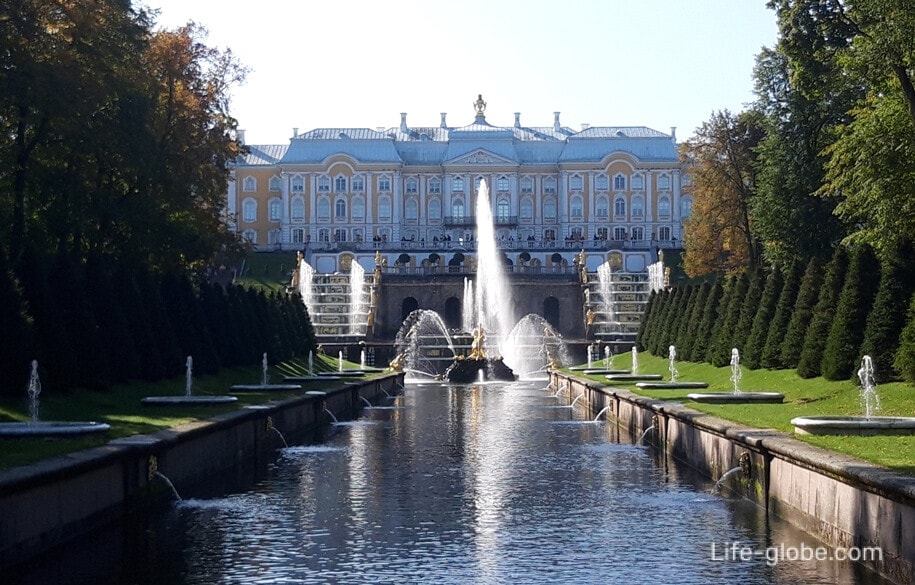
The formation of the palace with the adjacent park and garden dates back to the reign of Peter I (1714-1723), according to whose idea, as well as sketches and drawings, the Peterhof palace ensemble was created - the only seaside residence of the Russian emperors.
The first documentary mention of Peterhof dates back to 1705, when it was called "Peterhof" in the Dutch manner - that is, "Petrov's Yard".
The grand opening of Peterhof took place in August 1723.
After the death of the emperor, for a century and a half, there were subsequent transformations of the summer residence, during which the architects, including continued to embody all the main ideas of Peter the Great.
Extensive transformations and expansions took place at the behest of the Empress Elizabeth Petrovna (daughter of Peter I), as well as later under Catherine II and Nicholas I.
After the October Revolution of 1917, Peterhof became a major educational center. During the Great Patriotic War, the palace and its parks were destroyed, and many decorative elements of the parks were lost. Later, the ensemble was restored according to drawings, photographs and drawings. In 1990, the architectural and park ensemble "Peterhof" was included in the UNESCO World Heritage List, and in 2008 - recognized as one of the 7 wonders of Russia.
Today, the Peterhof Palace and Park Ensemble is a museum and a large-scale work of landscape art, architecture and history. In the Grand Palace, the palace halls have been restored, and museums have been opened. In the parks there are numerous fountains, parterres, flower beds, small palaces and pavilions, alleys and ponds, there is a pier and a Sea channel.
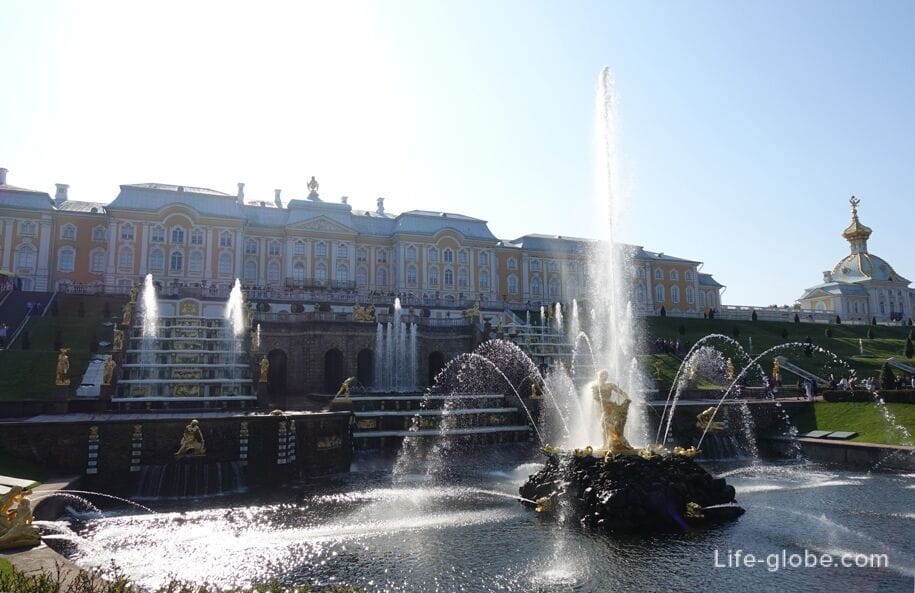
The Grand Peterhof Palace (or simply the Grand Palace) is the core of the ensemble, the pearl of history and the Baroque style, which now houses museums.
The palace is located on a terrace and divides the surrounding area into an Upper Garden and a Lower Park.
In the palace (for a fee) you can visit some rooms-museums: the halls of the Peterhof Palace, a special storeroom, the Church Building and the fountain museum. Visiting each of the museums is possible for a fee.
Although outside Peterhof Palace may seem impressive and wide, but when you get inside, you actually see that it is quite small and narrow. In total, there are about 30 halls in the walls of the palace, among which there are magnificent state halls decorated with mirrors, parquet, stucco, "gold" and paintings; as well as the grand staircase, offices, reception rooms, dining rooms, the throne room, the private chambers of emperors and empresses. Learn more about the halls of the Grand Peterhof Palace…
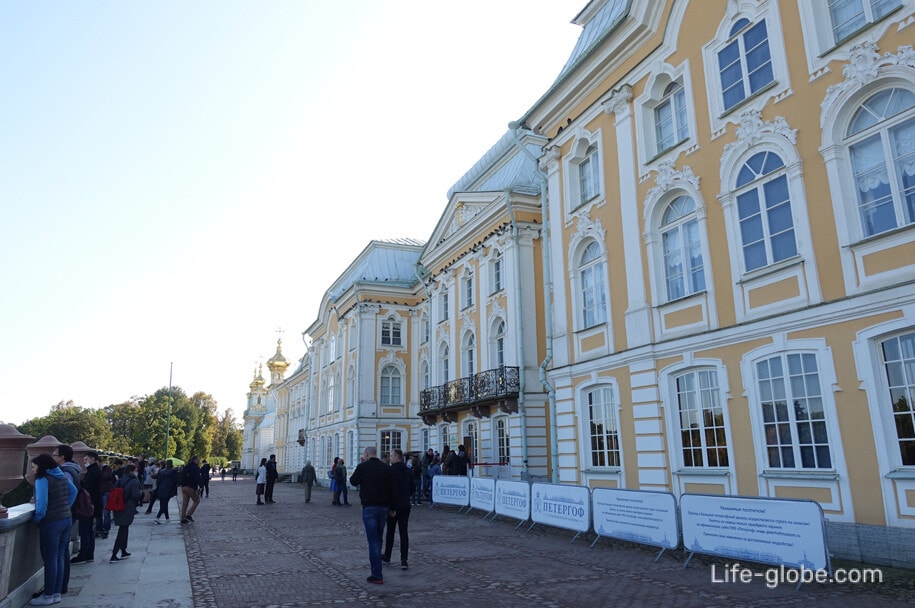
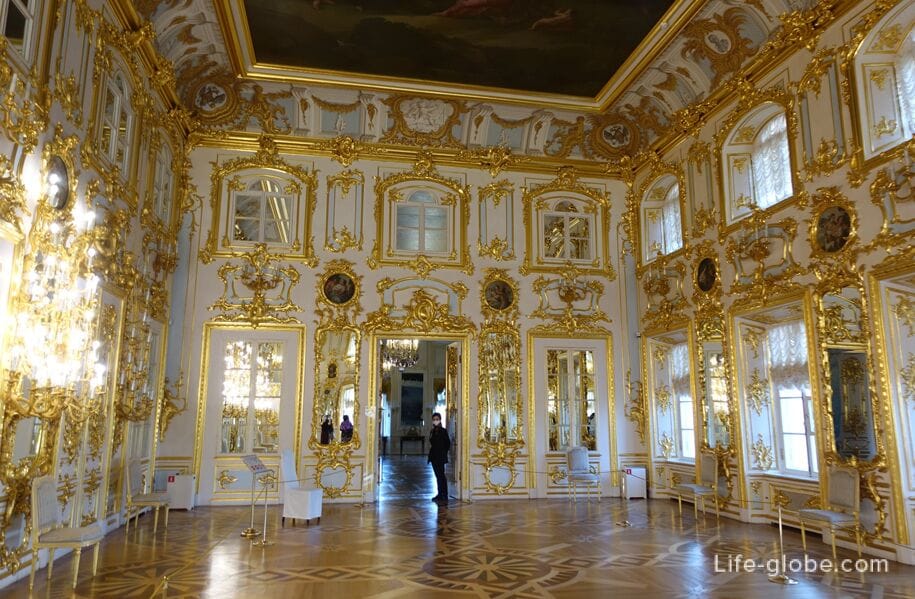
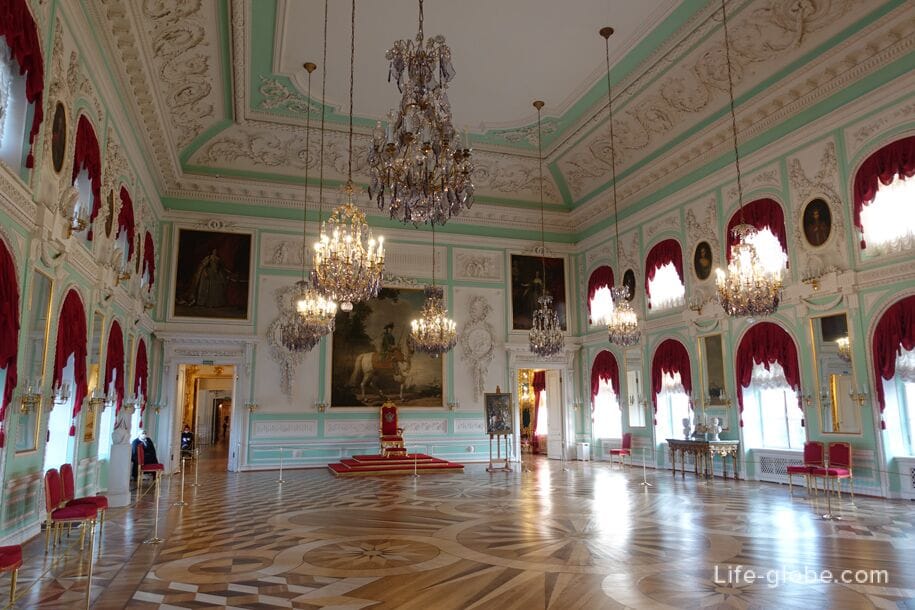
The church building of the palace served as the imperial court church and was built in 1747-1751 by the will of the Empress Elizabeth Petrovna, designed by F. B. Rastrelli.
The interior of the building combines Orthodox traditions with the ideas of Western culture and the Baroque style: bright paintings, gilded carvings, the absence of the Last Judgment scene, and the soft and kind faces of saints embody the idea of intercession for people.
A small exhibition in the Refectory is dedicated to the history of the palace church.

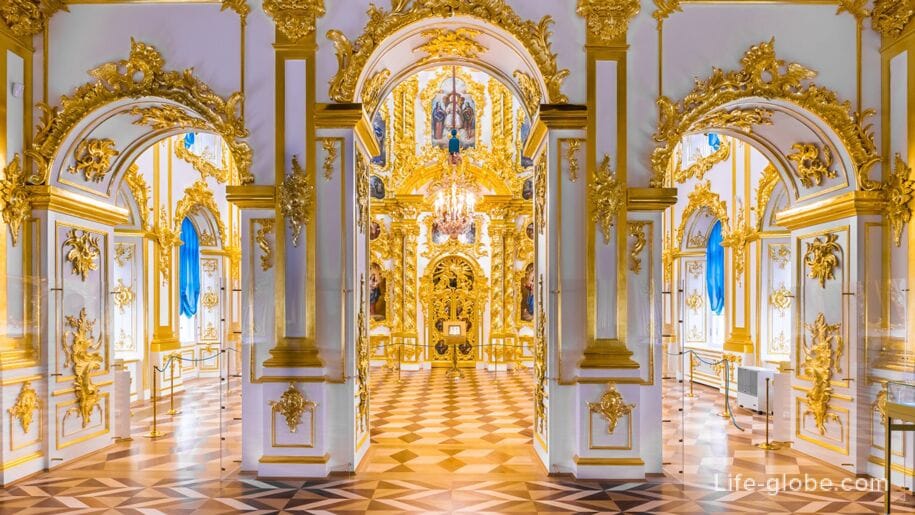
A special storeroom is located in the western wing of the Grand Palace, which was built according to the project of Rastrelli under Elizabeth Petrovna; it was called "Buildings under the Coat of Arms" because the dome of the building is crowned with a weather vane in the form of a heraldic double-headed eagle.
The rooms of the "Building under the Coat of Arms" were intended for the residence of noble guests and members of the imperial family. The Empress Catherine II herself lived in the apartments of the building, and the current museum displays a complex of her personal chambers.
The museum "Special Pantry" presents: church utensils; works of decorative and applied art and jewelry; clothing items; award gifts; products of the company K. Faberge, which decorated the palaces of Peterhof under the emperors Alexander III and Nicholas II.


The Fountain Museum is located in the eastern gallery of the palace.
The museum's exposition is devoted to fountain art, the history of the creation and development of the water supply system of Peterhof. Learn more about the Grand Palace and museums…
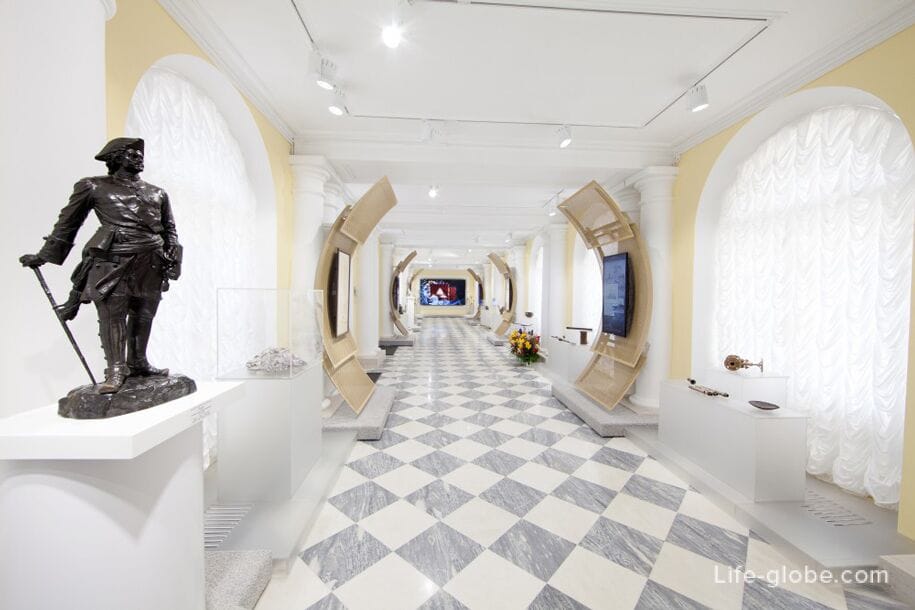
The upper garden has an area of 15 hectares, the layout of regular parks and is located on the terrace in front of the southern facade of the Grand Palace, so it is perceived primarily as the main entrance to the former imperial residence.
In the garden there are alleys, framed by lime trees, green galleries-berso, there are green lawns, framed by thuja in the form of balls and cones, as well as fruit trees.
In the garden there are ponds and sculptures, in the bosquets near the eastern pond there is a rose garden, and in the western one - the Petrovsky pharmacy garden has been revived, on the beds of which St. John's wort, oregano, echinacea, lemon balm, mint and other medicinal herbs are grown.
Entrance to the park is paid.
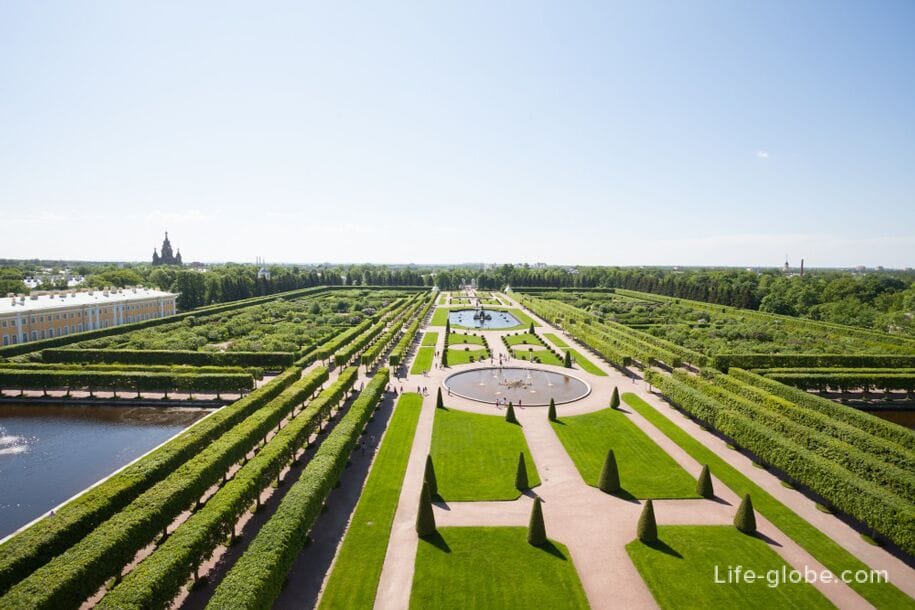
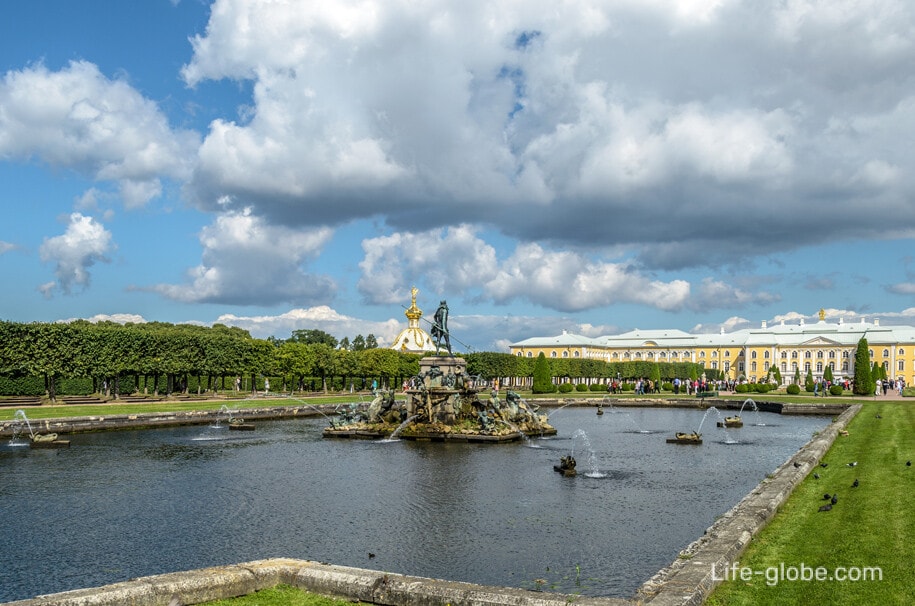
In the park there are five fountains, the central place among which is occupied by the composite fountain "Neptune", created in the city of Nuremberg (Germany) and in 1797 bought by Emperor Paul I, after which it was brought to St. Petersburg and installed in the summer imperial residence in Peterhof.
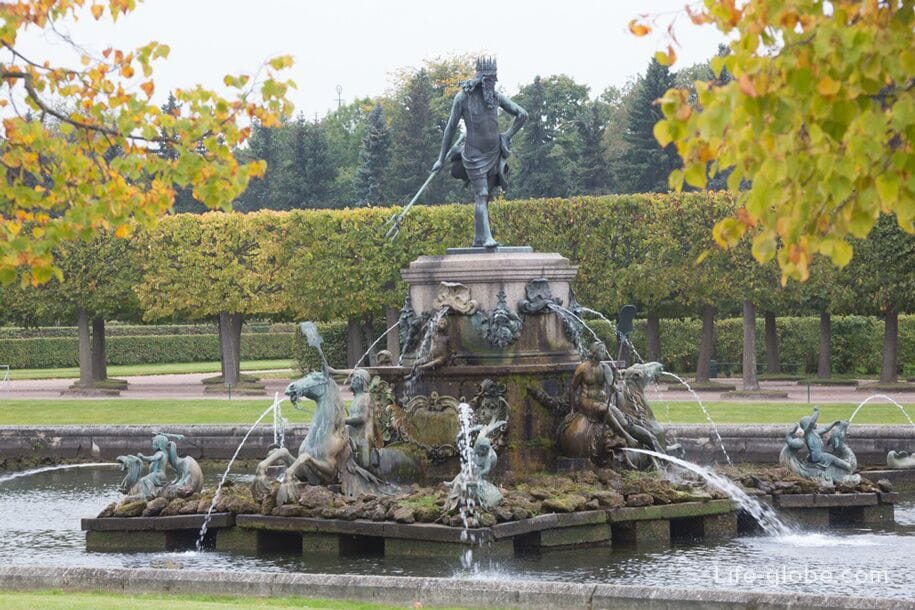
Also in the park there are: the fountain "Mezheumny", the fountain "Oak" and two fountains of Square ponds. Learn more about the Upper Garden and fountains…

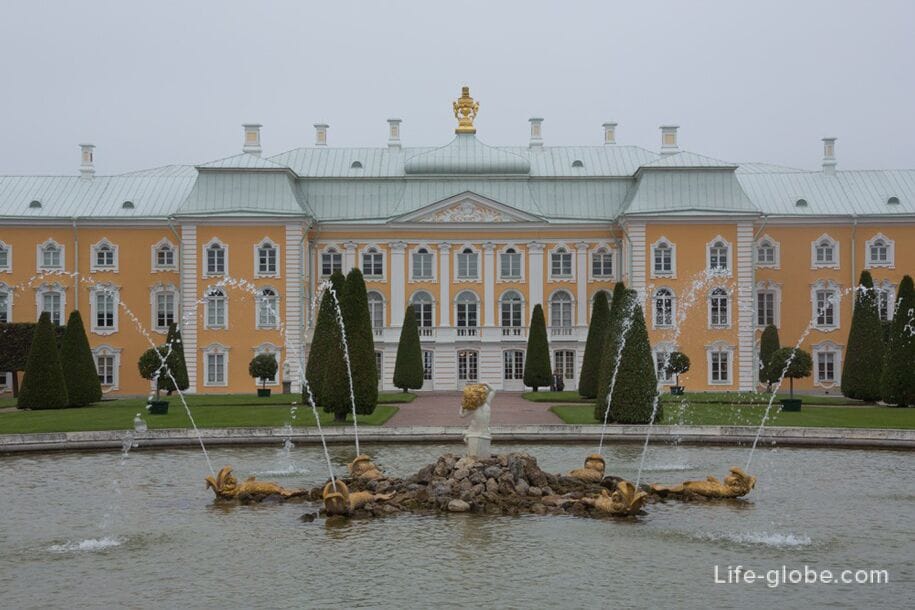
The Lower park has an area of 102.5 hectares, the layout of regular parks and is located between the Gulf of Finland and the Great Peterhof Palace.
In the Lower Park of Peterhof located: small palaces and pavilions, which are now museums, sculptures and monuments, Marina, ponds and flower beds, the alley, walking paths and places to stay; and, most importantly, what distinguishes the Lower Park, among other parks of Peterhof and St. Petersburg is the numerous fountains, of which the Park has about 150 fountains - for this reason, the Lower Park is also known as "fountain Park".
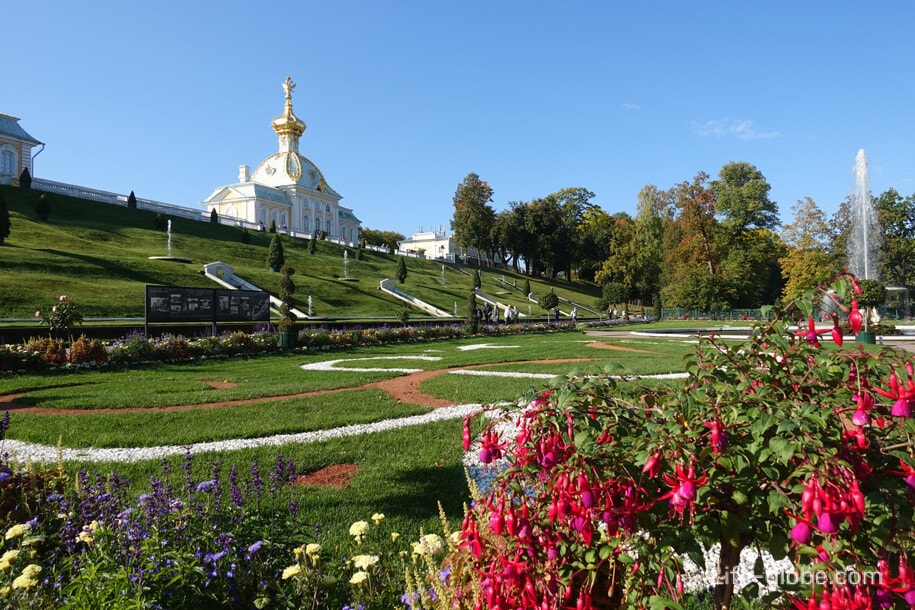

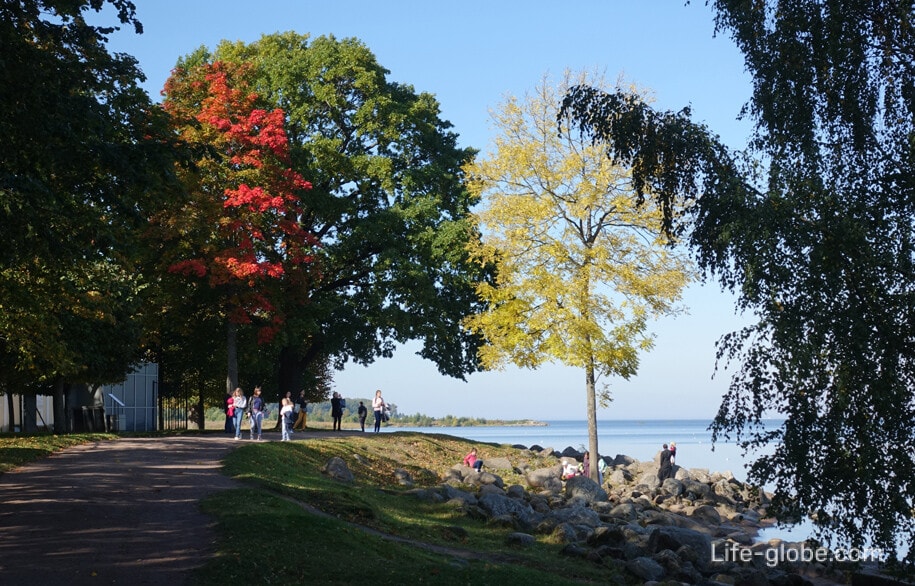
The central compositional place in the park is occupied by an architectural and water ensembleconsisting of: the grandiose fountain "Grand Cascade" with grottos, the fountain "Basket" and the fountain "Samson".
The Grand Cascade Fountain consists of two massive seven-step staircases running down the slope in front of the palace, connected by arches of a Large Grotto and decorated with sculptures.
The grottos of the Grand Cascade are now a museum.
On the lower terrace of the Grand Cascade, in front of the entrance to the Large Grotto, there is a fountain "Basket".
The Samson Fountain, located in a bucket at the foot of the Grand Cascade, is a symbol of Peterhof. Learn more about the fountain ensemble with photos, videos, and descriptions…
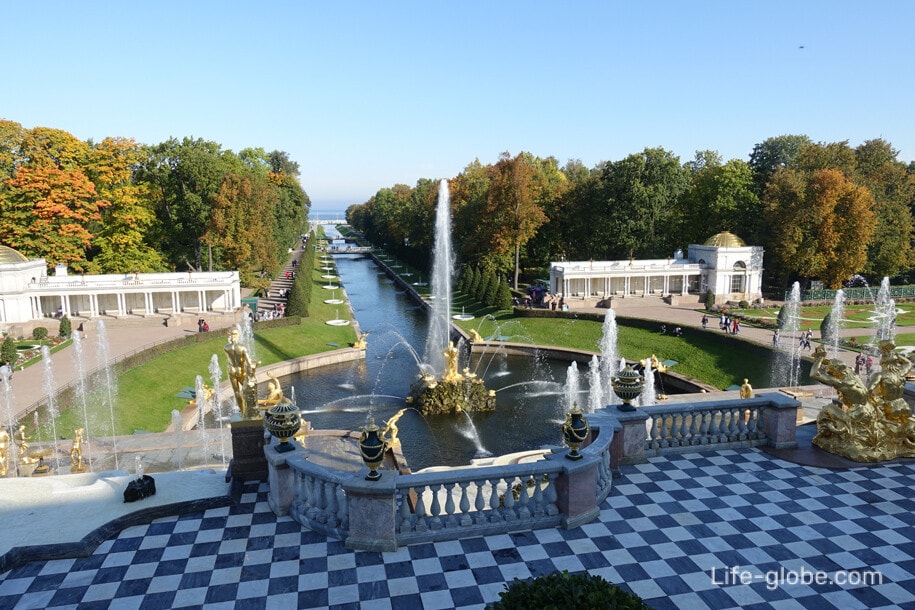
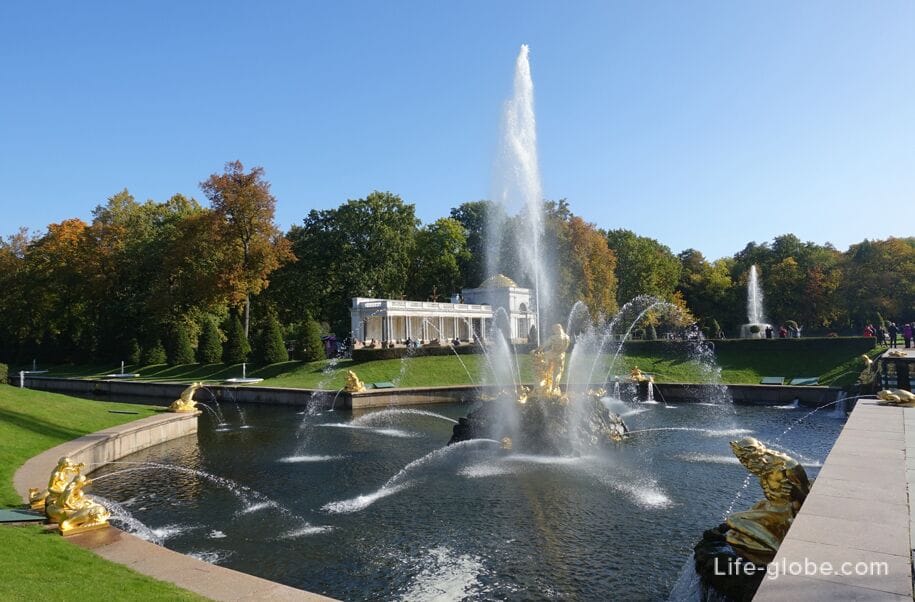
The water from the bucket, where the sculptural group of the Samson fountain is located, goes through the channel into the Gulf of Finland.
This channel, which is called "Samsonovsky", originally served as the main entrance to the territory of the palace complex. Guests arrived in Peterhof by ship, after which they were transferred to boats and light vessels that passed through the channel to the bucket, which then served as a harbor (the Samson fountain under Peter I was not yet there).
Today, the "Meteor" excursion ships are moored to the pier in the Gulf of Finland, delivering guests of the park from/to the center of St. Petersburg.
Along part of the canal runs an Alley of Fountains, which has 22 fountains ("Niche" fountains), and the canal itself is crossed by pedestrian bridges.
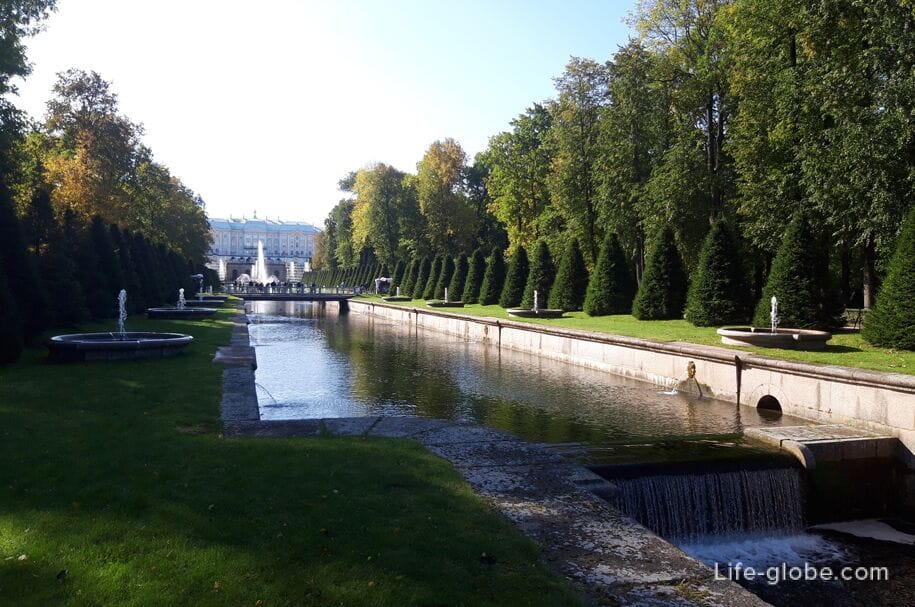
Also in the Lower Park stand out:
- paired fountains "Adam" and "Eve", featuring central figures mounted on high pedestals;
- fountain "Favorite", in which there are moving figures of ducks and dogs making sounds;
- powerful steam fountains "Menagerie" and " Bowls»;
- Pyramid fountain, the water jets of which beat up with such force that they form a water foaming pyramid;
- Golden Mountain and Chess Mountain cascades, where water flows along the steps of a fountain decorated with sculpture;
- beautiful Roman fountains surrounded by flower beds. According to the composition, the fountains resemble stone water cannons in Rome on the square in front of St. Peter's Cathedral;
- Lion Cascade-a strict fountain in the style of late classicism;
- Maze with a menagerie-type fountain;
- a powerful and lush fountain "Sheaf", in which a central jet of water beats to a height of four and a half meters, around which twenty-four inclined jets beat, arranged in two tiers, the jets of which resemble a large sheaf of heavy ears, showering transparent grains;
- fountain "Sun", whose water jets resemble the Sun;
- the Triton fountain, representing the allegory of Russia's triumph in the struggle for the Baltic Sea; and other small fountains. Learn more about all the fountains in the Lower Park…
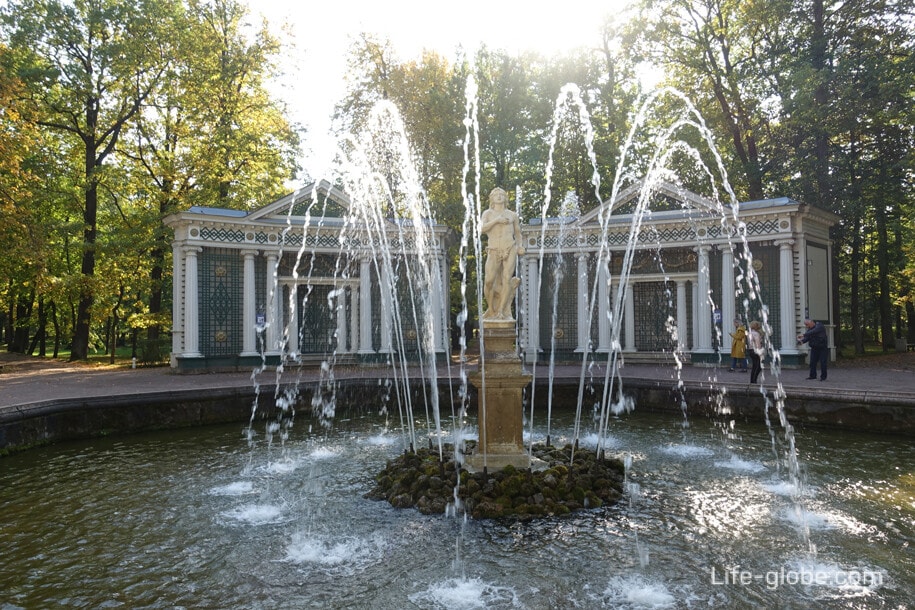

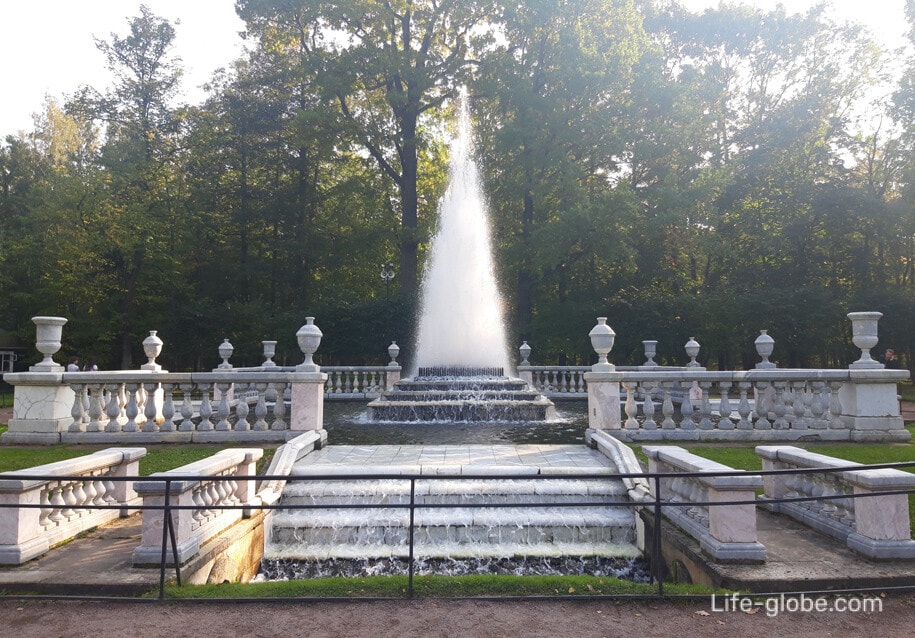

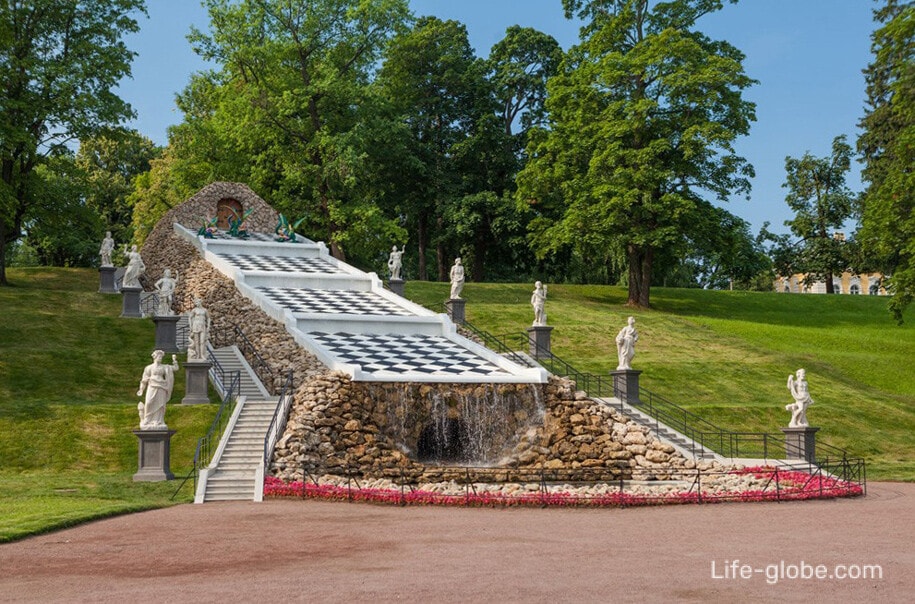

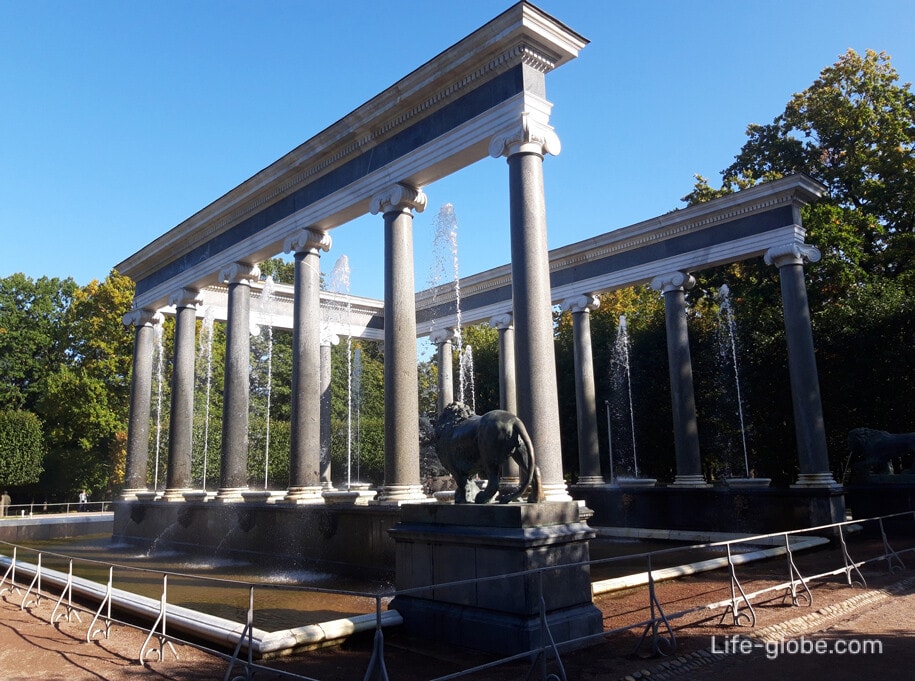
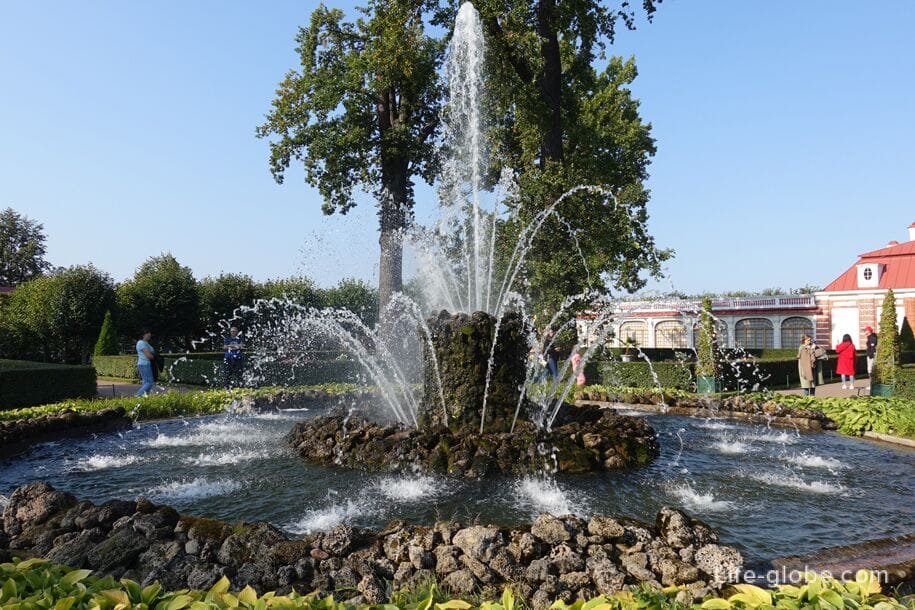
In a separate group of fountains in the Lower Park, the fountains-firecrackers - water fun-a kind of hidden fountain with a comic surprise, disguised as familiar objects or hidden in the landscape, and the idea of which is that the fountain's water jets appear unexpectedly and spray visitors, thereby creating a playful mood and immersing guests in the atmosphere of the game.
Only in the Lower Park are seven fountains, firecrackers, five of which (Tree, oak, Umbrella, Water, road and Sofas) are located near each other in the Eastern part of the Lower Park; and two fountain-crackers ("Table with sprinkling" and "Water curtain") - in the caves of the Grand cascade fountain in Central Park. Learn more about all the firecracker fountains in the Lower Park with photos and videos…
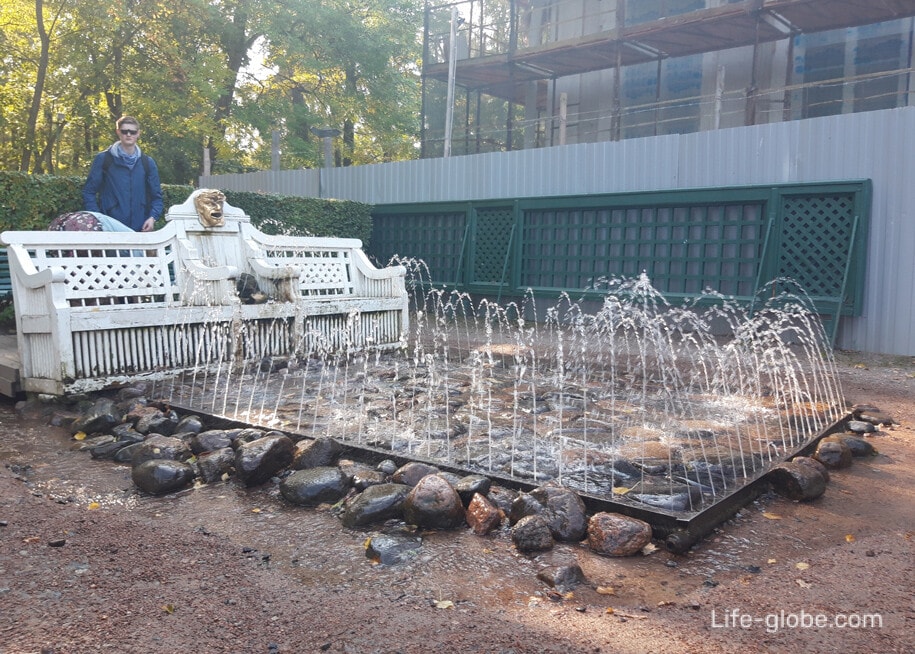
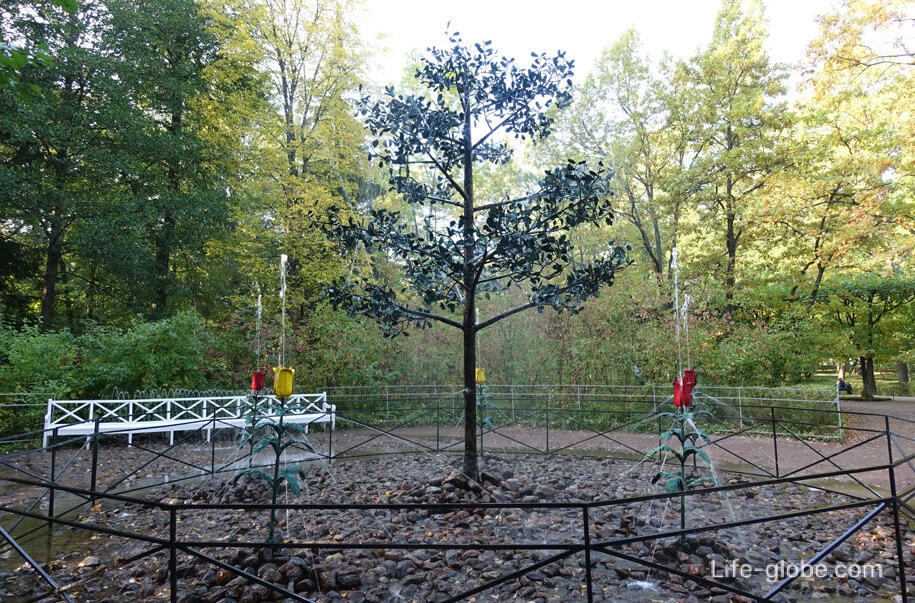
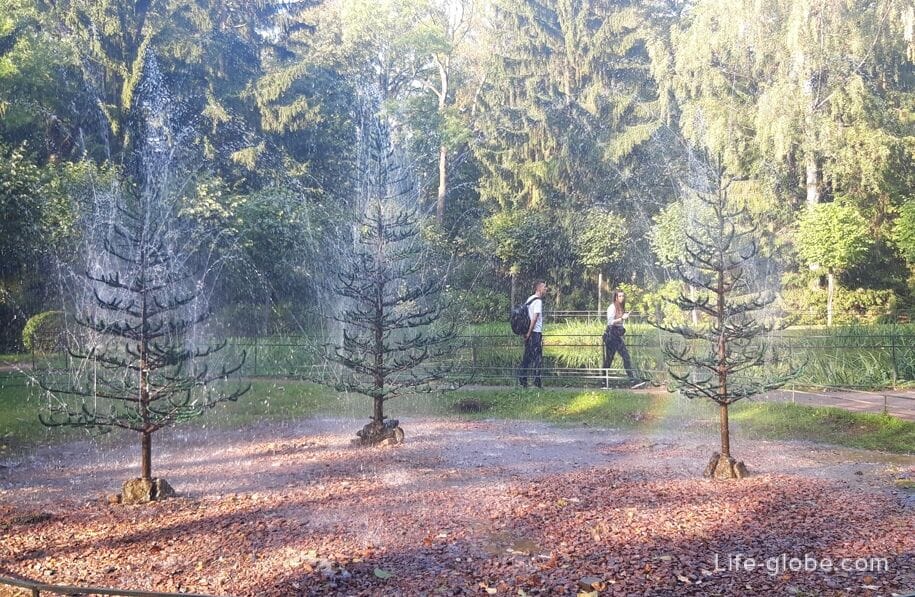
On the territory of the Lower Park there are museums locatedin small palaces, pavilions and buildings:
- grottos of the Grand Cascade fountain»in which you can see the original brickwork of the time of Peter I; pipes through which water is directed to the fountains of the Grand Cascade and the scheme of the fountain water pipe-a monument of hydrotechnical art of the 18th and 19th centuries; as well as the former firecracker fountains "table with splashing" and " water curtains»;
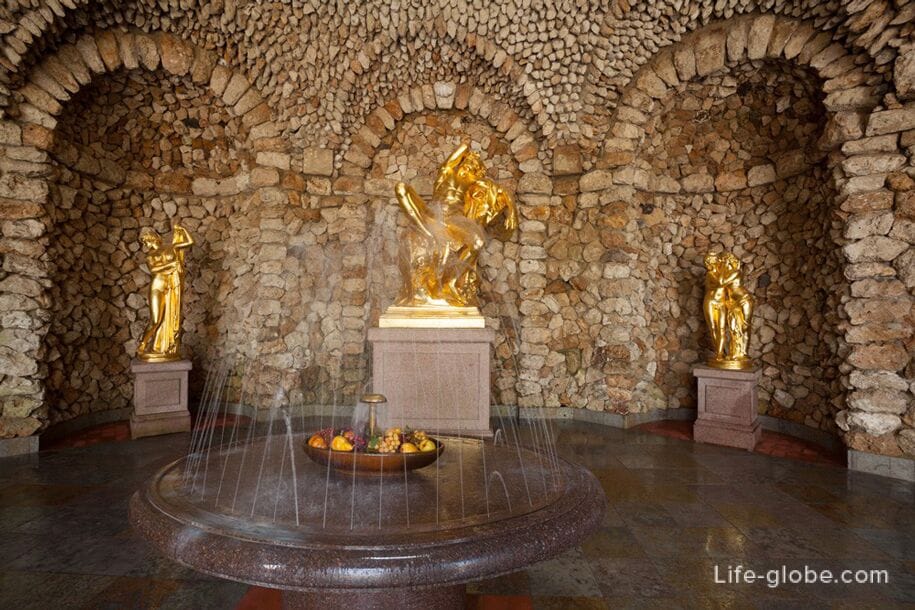
- The Marly Palace is one of the pavilions, the so-called small palaces, which was built by order of Peter I in 1720-1723 by the German architect-decorator Johann Friedrich Braunstein.
The palace was used as a guest house for the residence of nobles and members of the imperial family.
The museum's collection in the palace tells about the time of Peter the Great and contains memorial items related to the personality of the first Russian emperor; the basis of the museum's painting collection consists of paintings, including works by Adam Silo, Abraham Stork, Pietro Belotti and other artists. More about the Marly Palace…
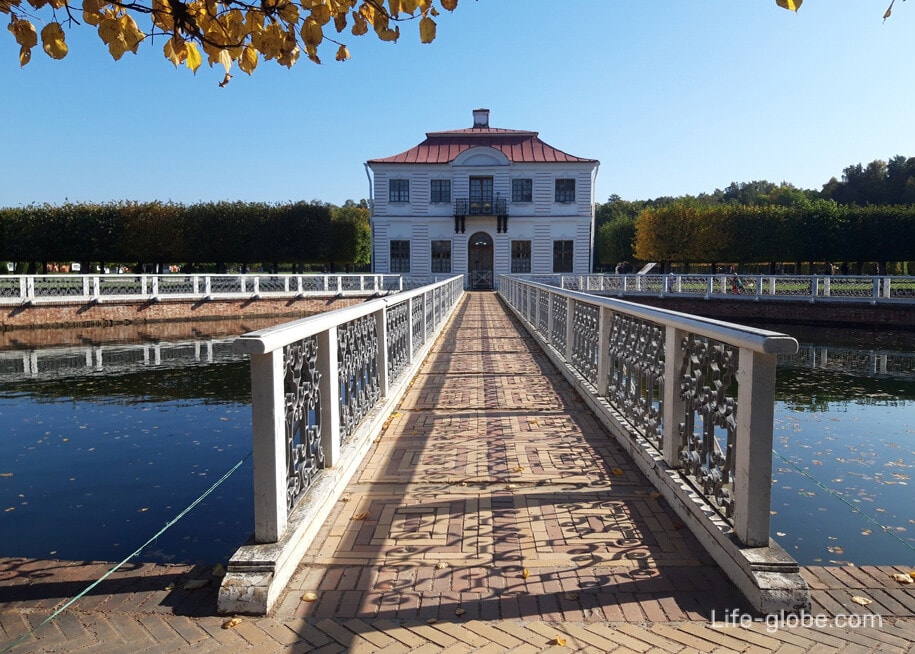
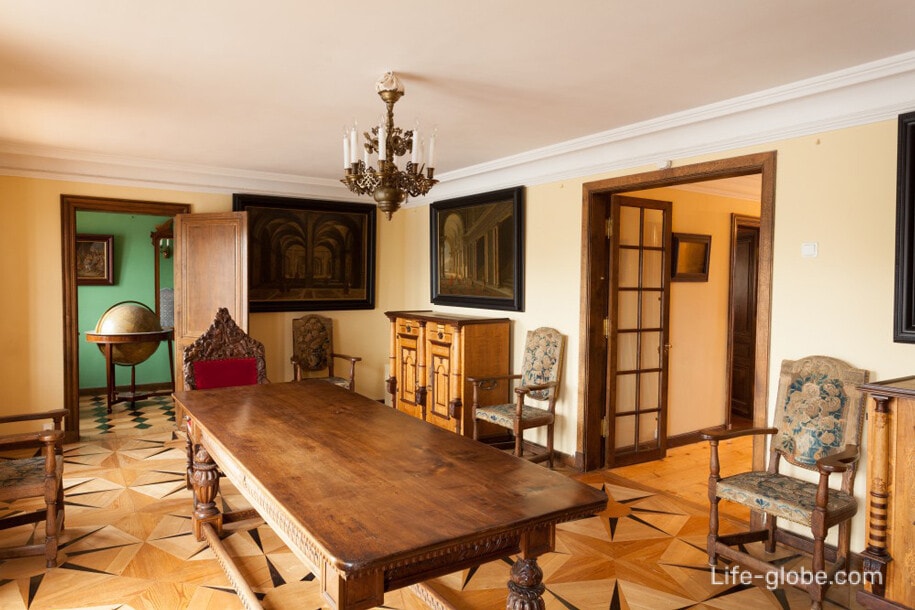
- The Hermitage Pavilion, the construction of which began in 1721 according to the project of the architect I. Braunstein.
The Hermitage is a small two-story building, standing on a massive base-a stylobate and surrounded by a deep, wide moat. The moat was previously filled with water and a drawbridge was thrown over it.
The jewel of the museum in the Pavilion is a table with a lifting mechanism-a miracle of technology of the first quarter of the 18th century. Learn more about the Hermitage Pavilion»…

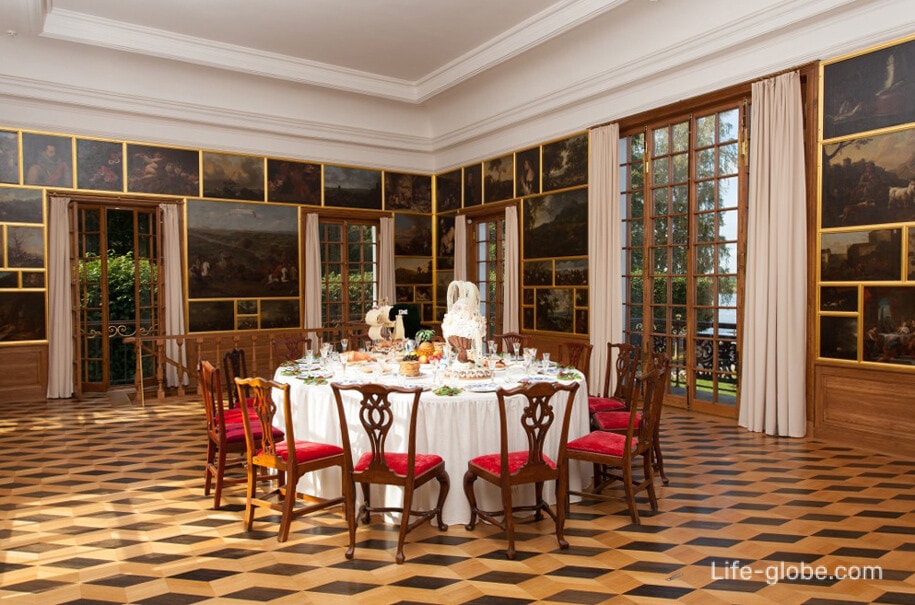
- the museum "Imperial Yachts", also called the Maritime Museum, located in a small building near the pier of the Gulf of Finland.
The museum's exposition is dedicated to an unfamiliar page in the life of the imperial family - the history of the St. Petersburg fleet and the construction of yachts, which was initiated by Peter I, gained strength during the reign of Catherine II, and a special flourishing began during the reign of Nicholas I. Learn more about the Imperial Yachts Museum»…
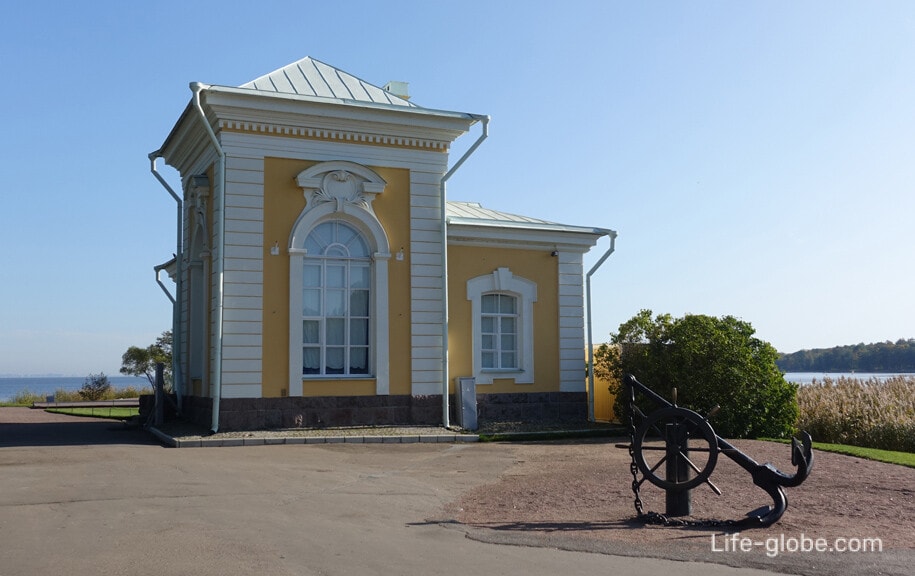
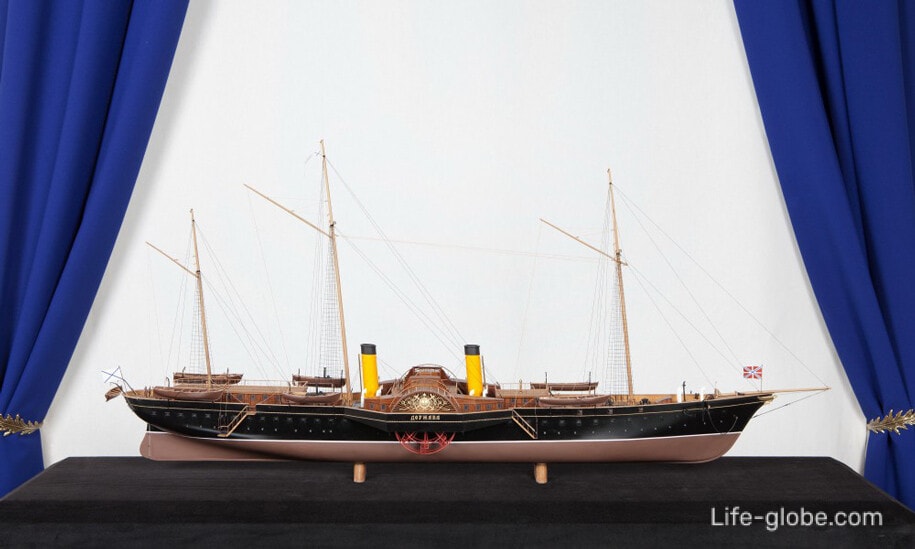
- the palace of Montplaisir, which was built in 1714-1723 according to the plan of Peter the Great.
The galleries and rooms of the palace are decorated with paintings of Western European paintings of the 17th and 18th centuries, most of which belong to the original collection collected by Peter I.
The walls of the palace's Lacquer Cabinet are decorated with large black-and-lacquer panels with miniature paintings made in the Chinese style.
In the kitchen, decorated in the Dutch style, some dishes are displayed. And the study of Peter I is connected with the maritime theme.
Also in the museum are some preserved personal belongings of Peter the Great: a felt nightcap, a towel, a pitcher and a basin for washing. Learn more about the Montplaisir Palace and the surrounding ensemble…
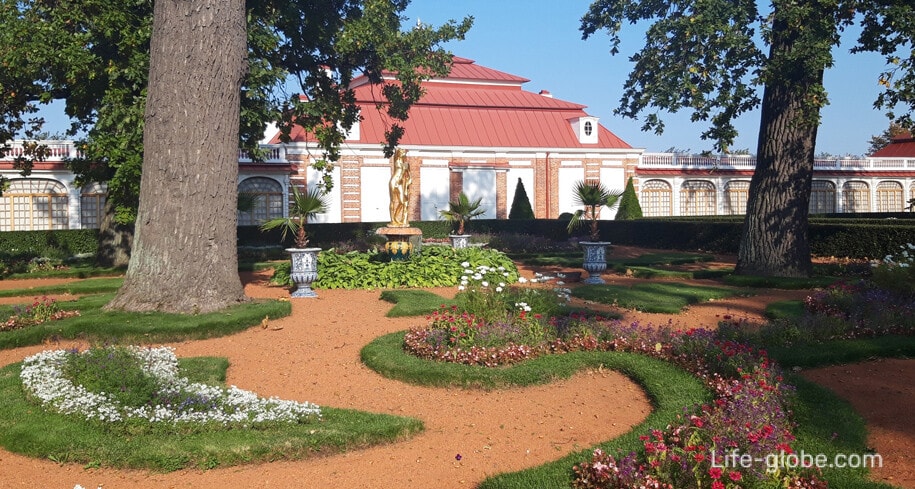
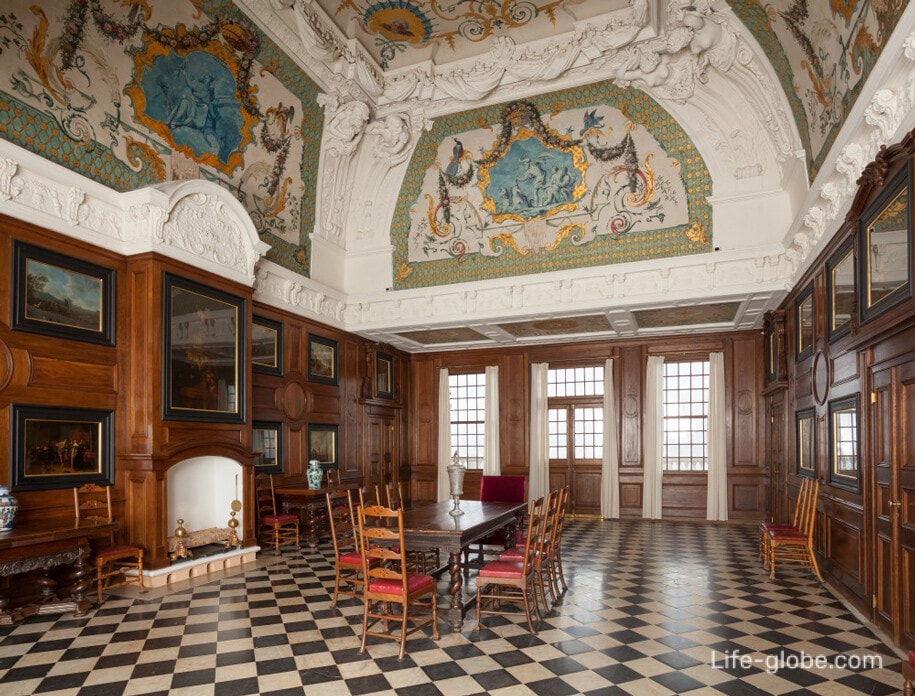
- Catherine's Building, built in 1747-1759 by the architect Francesco Rastrelli by decree of the Empress Elizabeth Petrovna.
The palace was intended for holding court balls, receptions and banquets.
Initially, the palace was called the "Stone Building". It was renamed Catherine's Palace, after Catherine fled from its walls, who, as a result of the coup, ascended to the throne as Catherine II.
Today it is a museum with the cabinet of Alexander I, where there are memorabilia related to the Patriotic War of 1812; and halls where collections of furniture and objects made of bronze are presented, as well as the tapestry " Peter I, saving fishermen during a storm on Lake Ladoga»;

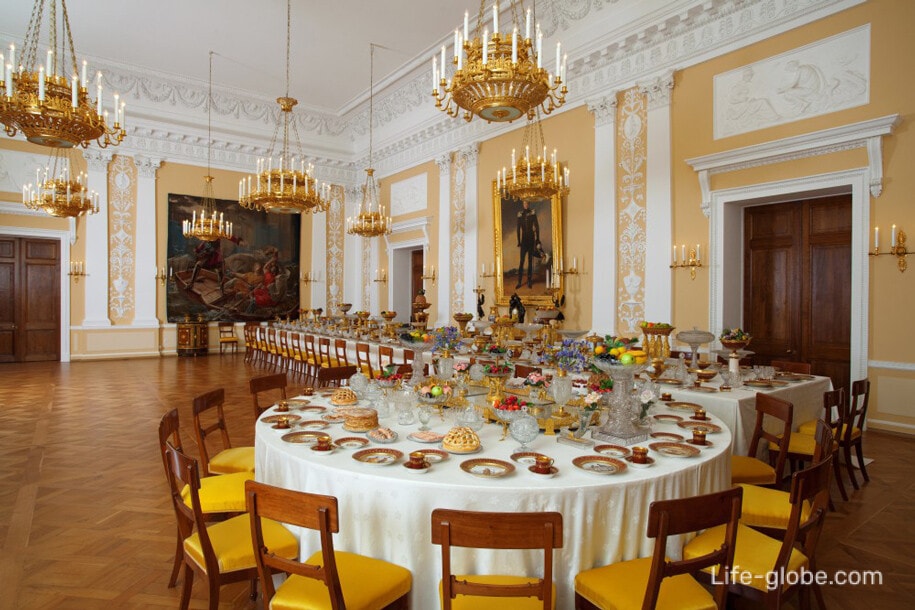
- Bath building, which is a complex of buildings for ceremonial and household purposes, built at different times.
Today it is a museum, where you can visit one of the rooms intended for the royal guests; the Soap room, where the water fun is located; the steam room with a room for cold baths; the Assembly Hall with a table covered with items from the Daily service made at the Imperial Porcelain Factory in the late 18th and early 19th centuries; as well as the Tafeldeker, Kitchen and Coffee Shop with a collection of ancient samovars;
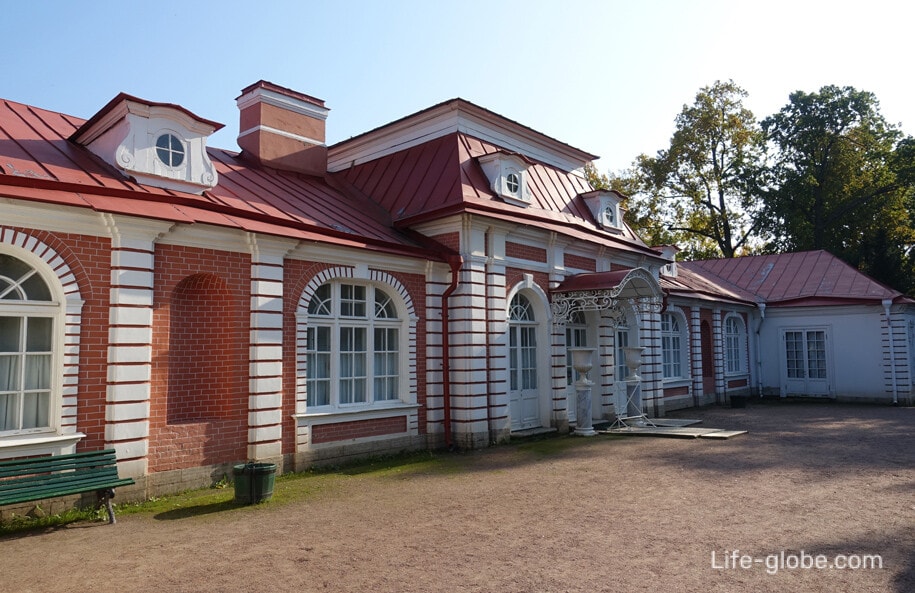
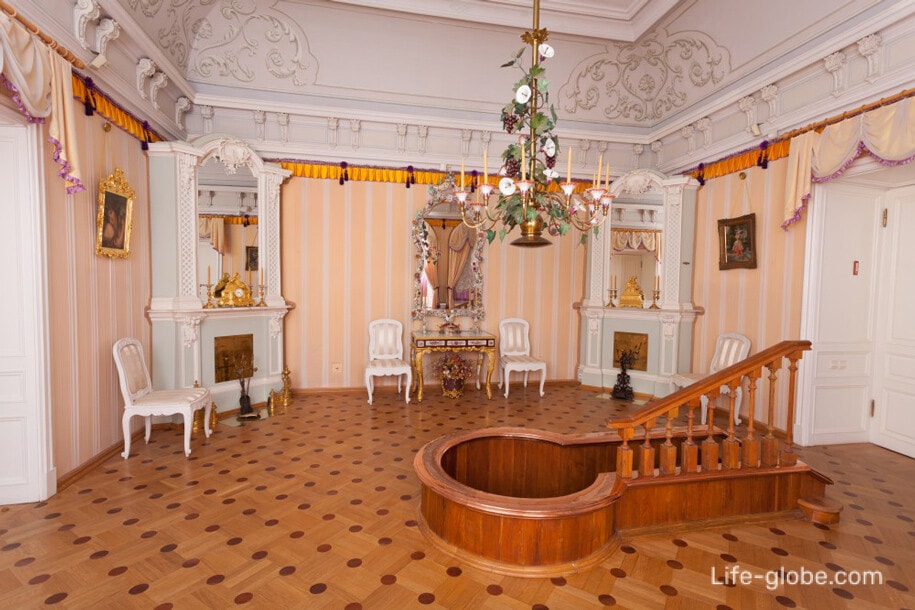
- aviaries - two light wooden pavilions; - twelve-sided gazebos topped with domes and light lanterns, in which cages with birds were hung in the summer. The eastern Enclosure was home to parrots, while the western Enclosure was home to songbirds: nightingales, thrushes, finches, finches, and bullfinches.
Today, as before, the aviaries are home to birds, including parrots and swans.
The aviaries are open during the summer season. They work as a kind of museum with a paid entrance. Learn more about the Lower Park of the Grand Palace of Peterhof...
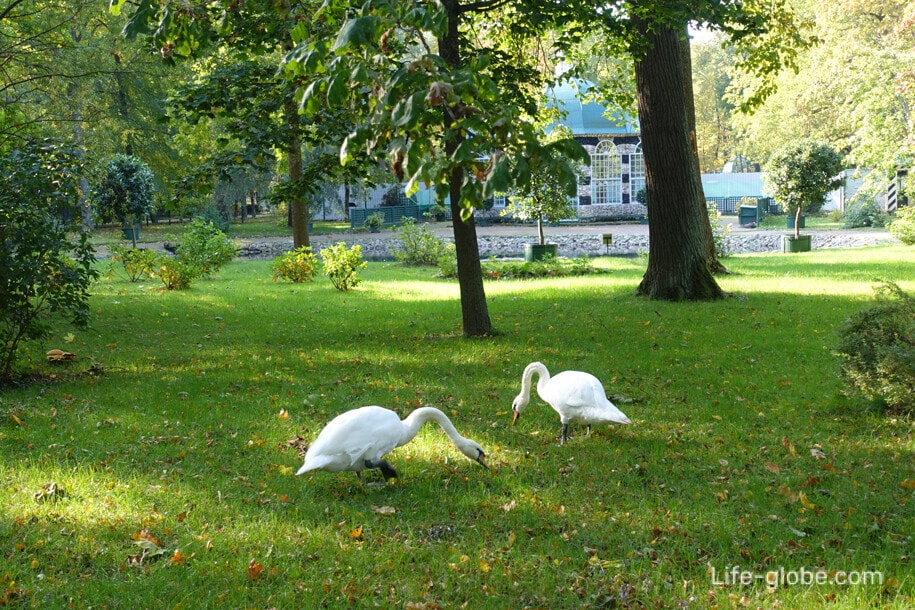
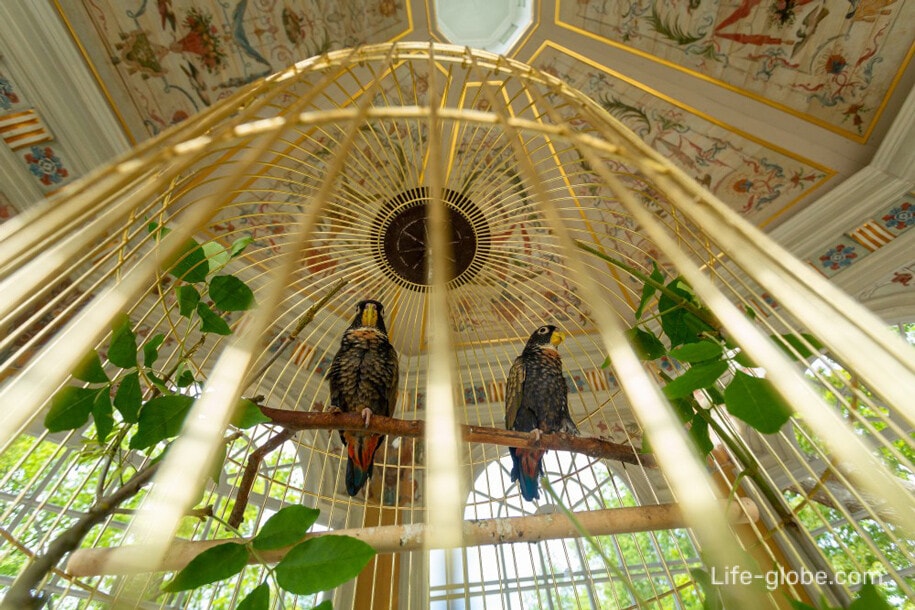
!!! The fountains of Peterhof are closed for the winter (do not work) - from about the middle of October until the 20th of April.
In winter, when the fountains are not working, the entrance to the Lower Park is free (free of charge).
During the summer season, the fountains are open and the entrance to the park is paid.
Entrance to each of the park's museums is paid. Museum visits are not included in the price of the entrance to the Lower Park - they are paid separately.
The park's museums can be closed for the winter, open only on certain days that change depending on the season (summer, winter), and also stop working under certain weather conditions.
The palace and Park Ensemble "Peterhof" belongs to the State Museum-Reserve "Peterhof".
Tickets to the halls and museums of the Grand Palace, the Upper Garden, the Lower Park and the museums of the Lower Park can be purchased at the ticket offices located directly near the entrances to the parks or online in advance on the official website.
The opening hours of the palace, garden, park and museums, as well as the conditions of visiting and the cost of tickets, are recommended to check on the website of the State Museum-Reserve "Peterhof": peterhofmuseum.
You can visit Peterhof with one of the excursions
All the ways to get to Peterhof from St. Petersburg (the airport and the city center) can be found here →
Near the Palace and Park Ensemble "Peterhof" you can stop
The 4-star Novy Peterhof Hotel features a restaurant, a bar, parking, a tour desk, a spa area with an indoor pool, a gym, a steam bath, a Finnish cedar sauna and an aroma sauna.
The rooms are decorated in a modern style and feature a TV with satellite channels, free Wi-Fi, a safe, bathrobes and slippers, a hairdryer and free toiletries. Some rooms have a seating area.
The room rate can include: breakfast, breakfast + dinner or breakfast + lunch + dinner. Link to the hotel
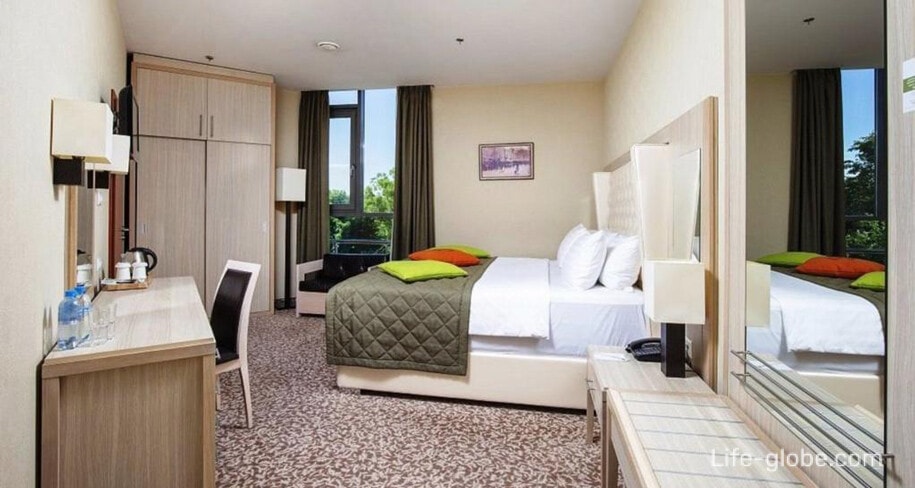
EGO-LOFT Apartment (Holgin Pond) they offer views of the lake and the city.
The apartmentfeatures air conditioning, a balcony, free Wi-Fi, a flat-screen TV, a washing machine, a bedroom, a kitchen with a dishwasher and a microwave, and a bathroom with a hairdryer and free toiletries. Link to the apartment
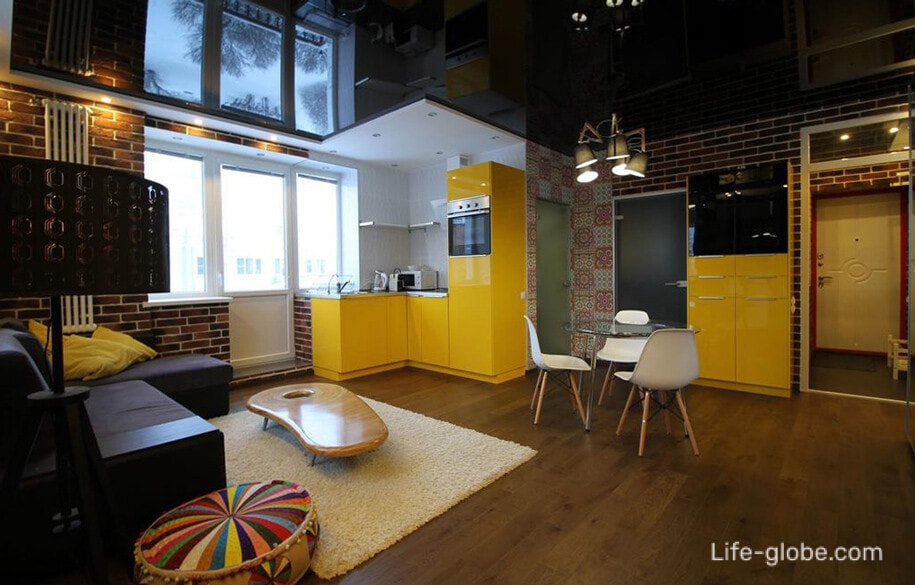
Severnaya Venezia Apartment с features a balcony with lake views, free Wi-Fi, a children's playground, a garden and a shared lounge.
The apartmentfeatures a bedroom, a flat-screen TV with cable channels, an equipped kitchen with a microwave and a refrigerator, a washing machine, and a bathroom with a shower. Link to the apartment
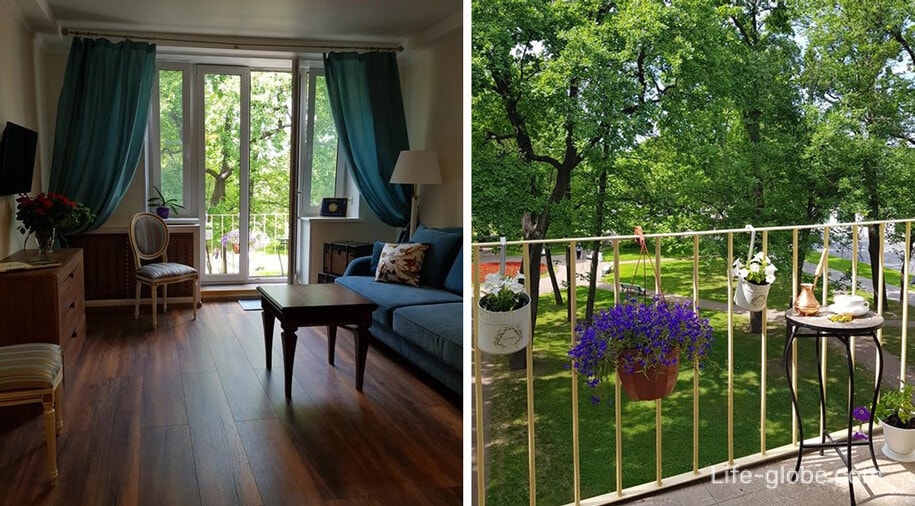
All accommodation facilities in St. Petersburg, including in the city center and in Peterhof, can be viewed and booked here